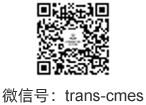| [1] |
罗洁思, 于德介, 史美丽. 基于SVD和线调频小波路径追踪的转速波动齿轮箱故障诊断 [J]. J4, 201016, 21(16): 1947-1951. |
| [2] |
胡超, 刘佐民. 基于材料匹配性的球轴承Heathcote黏-滑模型研究 [J]. J4, 201016, 21(16): 1969-1973. |
| [3] |
焦华超, 孙文磊, 王宏伟. 基于类小波辅助分类生成对抗网络的轴承故障数据生成方法[J]. 中国机械工程, 2025, 36(03): 546-557. |
| [4] |
李继猛, 王泽, 史清心, 孟宗. 基于图正则化约束频域组稀疏模型的风电机组滚动轴承故障诊断[J]. 中国机械工程, 2024, 35(11): 1909-1919. |
| [5] |
郭海宇1, 邹圣公1, 张晓光2, 3, 4, 陆凡凡2, 陈洋2, 王涵2, 徐新志2. 基于多源小波变换神经网络的旋转机械轴承故障诊断[J]. 中国机械工程, 2024, 35(11): 2026-2034. |
| [6] |
李灿1, 2, 王广斌2, 1, 赵树标1, 2, 钟志贤1, 张慧1, 2. 采用集约化开放集差异分布对齐策略的轴承故障诊断方法[J]. 中国机械工程, 2024, 35(09): 1622-1633. |
| [7] |
邹筱瑜1, 3, 孙国庆1, 王忠宾1, 3, 潘杰2, 刘新华1, 3, 李鑫1, 3. 基于时频融合深度网络的矿用钻机轴承故障诊断[J]. 中国机械工程, 2024, 35(08): 1405-1413,1448. |
| [8] |
高新勤, 杨学琦, 郑海洋. 基于多源域迁移学习的带式输送机剩余寿命预测方法[J]. 中国机械工程, 2024, 35(08): 1435-1448. |
| [9] |
肖刚, 顾海瑞, 董锦锦, 王琪冰, 陆佳炜. 仿真数据驱动的长期服役电梯导轨故障迁移诊断方法[J]. 中国机械工程, 2024, 35(01): 125-135. |
| [10] |
于树博, 刘占生, 赵辰. 动力学仿真数据驱动的域自适应智能诊断方法[J]. 中国机械工程, 2023, 34(23): 2832-2841. |
| [11] |
陈剑, 许畅, 徐庭亮, . 基于位错叠加法和改进概率神经网络的离心泵故障诊断方法[J]. 中国机械工程, 2023, 34(23): 2854-2861. |
| [12] |
秦国浩, 张楷, 丁昆, 黄锋飞, 郑庆, 丁国富, . 动态宽卷积残差网络的轴承故障诊断方法[J]. 中国机械工程, 2023, 34(18): 2212-2221. |
| [13] |
钱门贵, 陈涛, 于耀翔, 郭亮, 高宏力, 李威霖, . 一种改进基尼指数加权的轴承健康指标构建方法[J]. 中国机械工程, 2023, 34(15): 1813-1819,1855. |
| [14] |
易茜, 罗雨松, 胡春晖, 卓俊康, 李聪波, 易树平. 共享制造下基于数据迁移的滚齿加工碳耗预测方法[J]. 中国机械工程, 2023, 34(15): 1820-1831. |
| [15] |
董绍江, 周存芳, 陈里里, 徐向阳. 基于判别性特征提取和双重域对齐的轴承跨域故障诊断[J]. 中国机械工程, 2023, 34(15): 1856-1863. |



